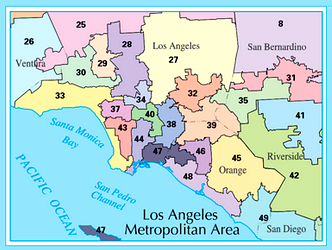By Jim Ellis
Aug. 24, 2021 — Continuing our series about the states losing seats in reapportionment and which members might be on the outside looking in, today we analyze the Golden State of California. The largest US House delegation will downsize one seat, meaning it will send 52 members to the next Congress.
To put the California population change into historical perspective, during the 1980 census the state gained seven new US House seats. In the 2010 census, for the first time in history, California did not add, and now we see actual reduction.
For the second time, the California Citizens Redistricting Commission will draw the congressional map and under specific criteria. The districts are supposed to be constructed on a nonpartisan basis without regard to specific incumbents’ residences or political situation, adhere to the Voting Rights Act pertaining to their substantial number of majority minority districts, and keep cities and counties whole where possible.
Looking at the actual census population by district as opposed to the previously published census estimates, changes in which districts may be on the chopping block are evident. Under the estimates, it appeared that Rep. Adam Schiff (D-Burbank) was the low population CD, but his 28th District seat now is 12th from the bottom. The new low is veteran Rep. Lucille Roybal-Allard (D-Los Angeles), whose 40th District needs to gain 70,139 people.
Of the current 53 districts, 35 must gain population while 18 will shed; hence, the reason the state is losing a seat. From a county perspective, it appears the Los Angeles members will be most at risk. A total of 18 congressional districts encompass LA County including nine that are wholly-contained. The other nine districts cross county borders into such places as Kern, Orange, San Bernardino, and Ventura.
Of the 18 districts wholly or partially within the LA County borders, Democrats represent 15 and Republicans just three. Only one of these 18, the 23rd District of House Republican Leader Kevin McCarthy (R-Bakersfield), must shed population. Though certain other places in the state are also resident-low, there is a good possibility that the seat reduction will come from one of the Los Angeles districts, particularly among the nine seats wholly within the county since all of those contiguous seats must gain residents.



